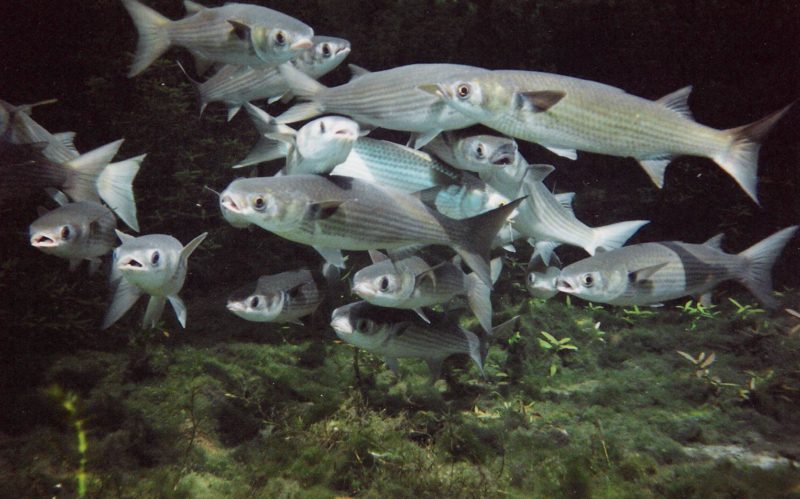Fishermen in the Gulf of Mexico mullet hub of southwest Florida just cannot seem to catch a break.
Following two years of toxic red tide and blue-green algae and, lately, the covid-19 health and economic crisis, mullet catches and prices stayed down from average November-to-January runs.
Casey Streeter, owner of Island Seafood Market in Matlacha on Pine Island, said be-fore the run petered out in mid-January, boat prices for roe mullet reached $1.40 per pound — well off previous peak seasons of $1.75. But at least the run lasted weeks longer than the dismal 2018 season, which ended abruptly after just a few days.
Statewide, a little more than 1,200 pounds of roe mullet was harvested in 2019, com-pared to just over 800 pounds the previous year. Non-roe mullet landings for 2019 were more than 1 million pounds lower than the 2018 harvest of about 6.9 million pounds. Average boat prices hovered around 70 cents.
“This year we had a decent run from Marco Island to the Panhandle,” Streeter said. “Everyone was really glad to have a season after two years of red tide. We’ve got a lot of mullet around right now. I hope we have a weak-to-nonexistent red tide season.”
But the coronavirus is impacting mullet sales by interrupting the supply chain be-tween the U.S. and Asian markets and quashing restaurant demand, which drives the market for Gulf of Mexico seafood products.
“It’s going to change the landscape,” Streeter said.
Karen Bell, who operates Star Fish Seafood in Cortez, Fla., said she bought most of her mullet from the Pine Island area and was still trying to sell a container-load of prod-uct after Asian buyers demurred. Bell said Asian countries have bought most of their mullet from Brazil after that South American country was shut out of European mar-kets in 2017.
“There’s a lack of demand,” Bell said. “Very little interest from Taiwan or anywhere.”
Mike Dooley — a veteran Pine Island mullet fisherman — said he didn’t see much of an improvement in this season’s run over the previous one.
“Very few catches this December,” he said. “Front after front. We probably got two weeks of fair fishing. This area got hit real hard with red tide, and they didn’t come back. The highest price we got was 85 to 90 cents for the roe.”
Streeter’s boats serve as early-warning sentinels in case the red tide shows up in near-shore gulf waters this summer. Several are equipped with water-quality monitoring equipment to test for presence of the toxin offshore before it reaches the mullet grounds. The data is shared with forecasters with NOAA.
“Our water looks great right now inshore, offshore,” Streeter said. “Our fishing is responding. We’ve got good recruitment. Testing is important now so the scientists can be ready if it does happen.”







